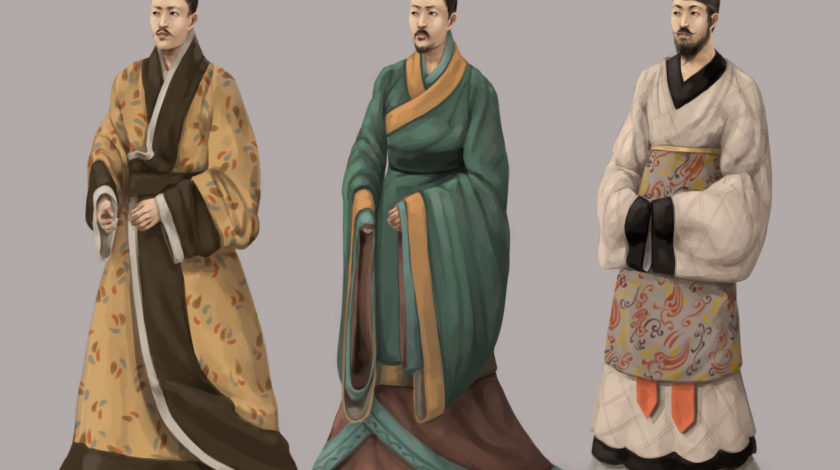In this article, you will find out about the various styles of clothing that have existed across each of China’s main dynasties
Clothing throughout the major dynasties
1) Han dynasty – It was China’s second imperial dynasty (206 BCE-220 CE) and was an age of economic growth. It is regarded as one of the most influential and powerful dynasties in Chinese history.
Nowadays, when people think of the Chinese, they typically think of the Han people, because they are the dominant ethnic group in China, and therefore Chinese characters are referred to as Han characters. As well, the Mandarin language is called the Han language and traditional Chinese clothing is called Han clothing.
At the time of the Han dynasty, clothing designs and styles were pretty much the same for women and men. To distinguish between the genders, different fabrics, colors and ornaments were utilized. This era was known for its so-called – dark style, which used black and red colored fabrics.
Features of Han clothing involve very wide sleeves and a loosely layered look, with clothes, often consisting of two or three garments, mainly a loose open cross-collar garment, an open cross-collar robe, and a long wrap skirt were utilized as the external garment and wrapped around the waist.
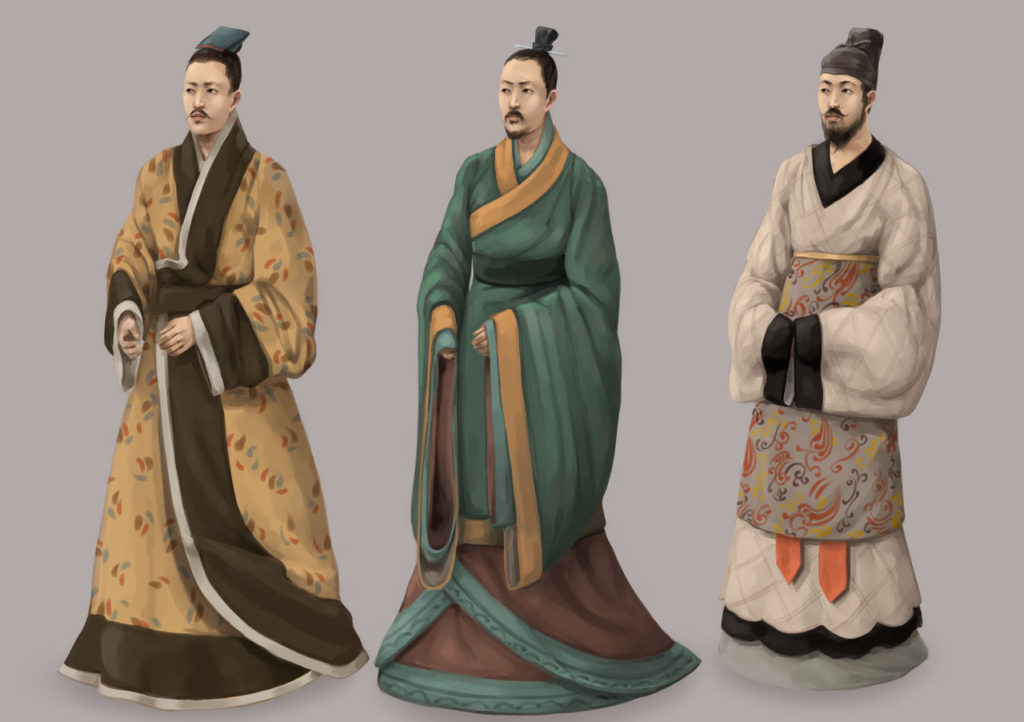
Here you can find out about PrettyLittleThing return policy
There were two general types of robes: 1) the curved hem robe; 2) the straight hem robe. Women also had an extra option of wearing – a cross-collar wrap shirt combined with a long skirt.
2) Tang dynasty – It is typically regarded as one of the most prosperous and culturally significant times in Chinese history (618-907 CE). Owing to prospering international trade with neighboring countries through the Silk Road, Indian, Persian, and even western culture was combined into Chinese culture.
The perfect opportunity was created to facilitate a change in traditional fashion when more fabrics and new dyes were introduced from neighboring countries.
In that period, people put a lot of thought into their clothes, therefore Tang fashions were very colorful. The main materials utilized were wool, silk, and linen, with the latter signifying high status. Due to its price, silk was exclusively reserved for the noble class.
Yellow and Gold were the exclusive colors of the emperor and royal family, and little by little evolved into symbols of imperial power.
Women frequently wore long-sleeved shirts with wide sleeves and collars that displayed their cleavage. These shirts, which were thought to be quite daring and revealing in comparison to previous dynastic fashion tendencies, were tucked into long flowing skirts decorated with geometric patterns which were secured by a belt tied around the chest.
During this era, makeup was also quite daring, with lead face powder to create the illusion of very white skin, drawn-on eyebrows, and flower-like patterns painted between the brows.
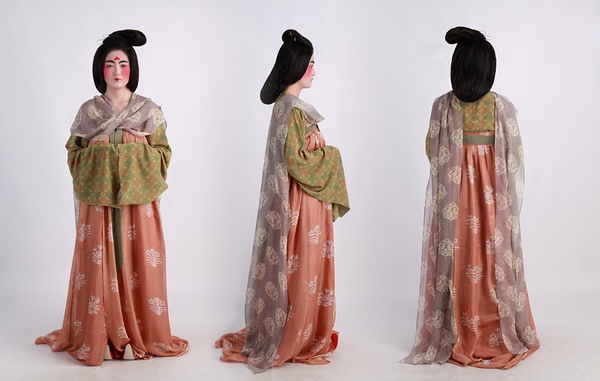
Discover how PrettyLittleThing return policy work
Clothing of men was a maintenance of the styles seen in the Han dynasty, although with more options. Solid-colored robes with rounded collars, commonly accompanied with leather belts and boots consisted of everyday outfits.
3) Ming dynasty – During China’s dynastic history, there were times where some or even all parts of imperial China were ruled by non‐Han peoples, generally from Mongolia or Manchuria. The Ming dynasty was a Han ethnic majority regime (1368-1644 CE) that straightaway followed the Mongol governed Yuan dynasty.
The beginning of the Ming dynasty defined a restoration of Han control, so one paramount aim of the Ming ruling class was to advocate Han culture and strengthen the Han people’s sense of identity within the new regime. As a result, clothing styles almost mirrored that which were seen in the Han dynasty, although with a little bit of a twist – removing the impact of ethnic minorities and foreigners.
Fashion of men revolved around patterns and square collars which were utilized to distinguish between rank and social class. Such patterns commonly consisted of embroidered designs featuring plants, animals, and geometric patterns.
In general, men wore their hair in a bun, while officials wore a futou. It was a black-colored hat with two, flaps that looked like wings, it was made of thin, oval-shaped boards on every side.
Women’s clothing became more modest during the Ming. Most women, over a floor-length skirt, wore a midi-length upper garment. This outfit created the illusion of an elongated silhouette.
Another variety of styles was a skirt with folds combined with a cross-collar top made from cotton that extended down, below the waist. Pastel and light colors were highly popular.
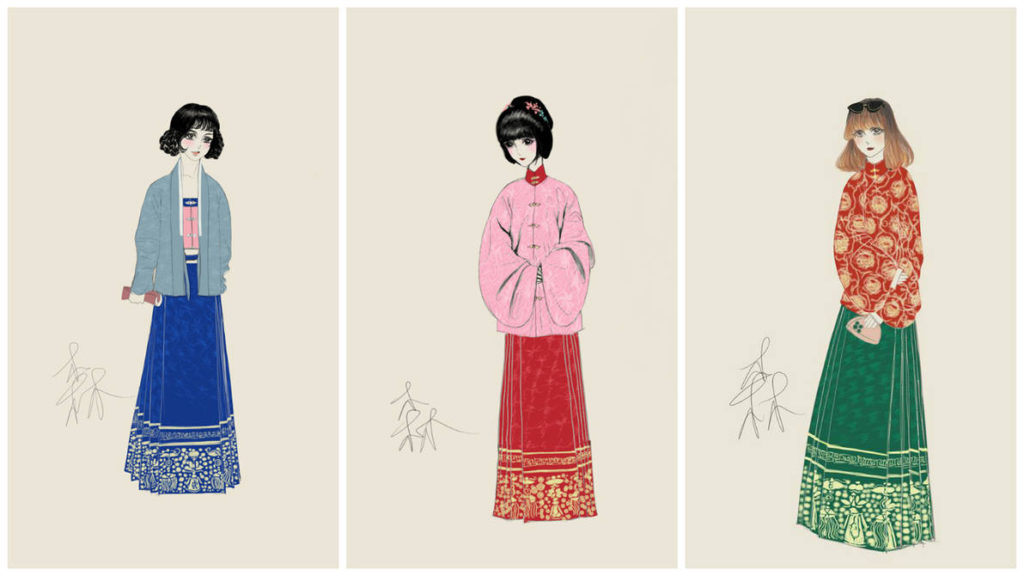
Part of the costume for both men’s and women’s clothing became embroidered capes as well. Typically, these garments had a straight collar with open sleeves.
4) Qing dynasty – The Qing dynasty (1636-1912 CE) was established by the nomadic Manchu people in the 17th century.
The Qing dynasty clothing scheme was very complex and came with many different regulations and rules. In the period of this dynasty, a robe easily revealed the wearer’s rank. For instance, yellow represented the dynasty’s color, and this color was reserved only for the royal family.
The cavalry clothing of the Manchu horsemen greatly influenced the Qing dynasty’s fashion.
Usually, men wore a tangzhuang, a type of jacket with a straight collar inspired by the original three-quarter-length riding jackets of the Manchu horsemen. This was usually combined with an ankle-length wrap skirt. Manchu men shaved the front part of their hair as well, leaving the remaining hair in a braid that hung behind their heads, which is called a queue.
At first, when it came to clothing rules, the Qing dynasty was extremely draconian. Many Han Chinese were forced to adopt the Manchu male clothing and hairstyle or else face the death penalty. Anyhow, this later became a rule that applied only to those who served as scholars or officials and not ordinary people.
In preparation for marriage, Manchu women customarily grew their hair long. Married women had a wide range of hairstyle options to choose from – the most typical one was the Liangbatou, which was the hairstyle adopted by Empress Dowager Cixi. This style consisted of a tall head garment that had hair parted to each side of the head and embellished with ornaments and flowers.
Opposite to men, Han women were permitted to wear the clothing of Han-style, which was from the Ming dynasty. Women also were not required to wear the traditional Manchu hairstyle for women. Common clothing style for women from well-off families consisted of a front or side-fastening robe with a wrap-around apron skirt with folds.
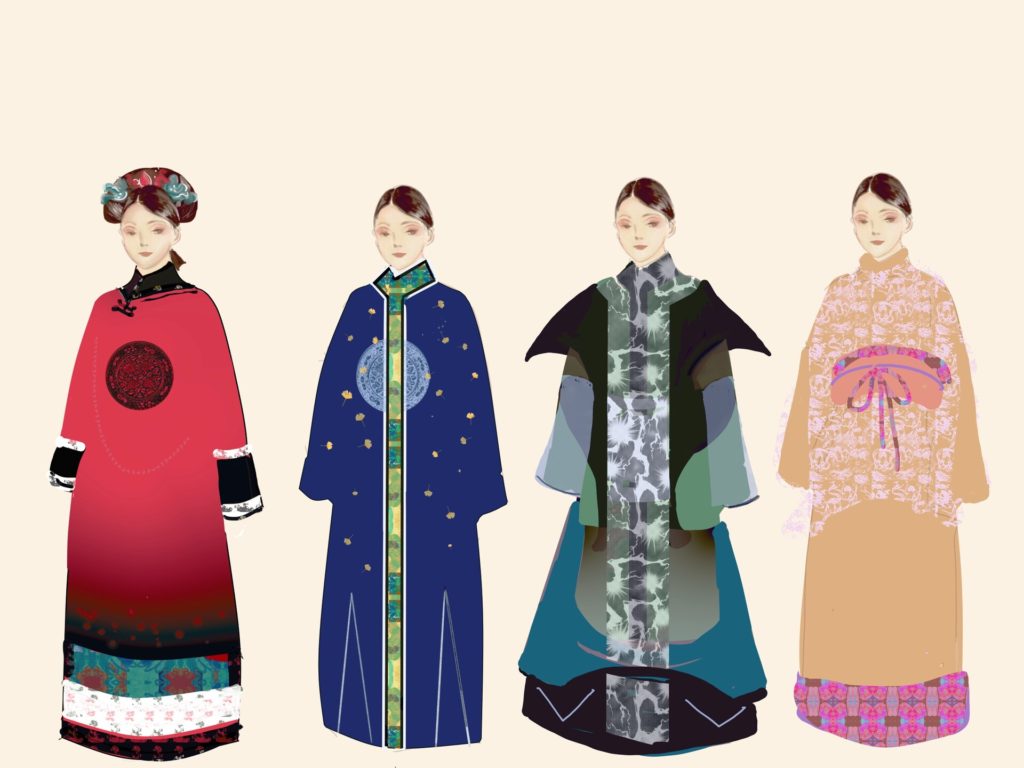
Here you can check out various types of return policies
When thinking of traditional Chinese clothing for women, many people think of the qipao, also known as the cheongsam. The qipao was the dress of the Manchu women, it originated in the Qing dynasty. However, after the fall of the Qing dynasty, the qipao did not really become popular in Shanghai and Hong Kong till the 1920s.
